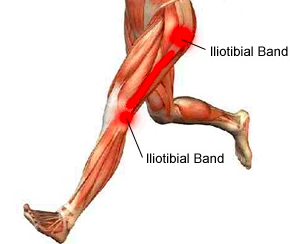Injured? Why stretching and strengthening are often NOT enough.

Yes, stretching and especially strengthening can be very important. However, more often than not, they are better used in the later stages recovery. Here’s why:
First, when strengthening and stretching ARE important.
Active rehab, including stretches, exercises, mobility and balance work, can be extremely effective and occasionally all that is necessary with simple injuries.
Also, pain science tells us that movement, mobility, strengthening and active rehab should be implemented concurrently or as soon as possible following passive treatments. Furthermore, exercises that enhances blood flow to the muscles, synovial fluid to the joints and tendons sheaths will also stimulate and increase the healing ‘products’ (hormones and other repair products) and therefore increase the rate of healing as long as they are not excessive or aggravating the injury. Movement can inhibit pain and help reduce protective tension around an injury.
For example, even after full hip replacement surgery, the patient is asked to get up and ‘weight-bear’ within a few hours or surgery. Research shows recovery is quicker the sooner activity (within capacity) is initiated.
I always give my patients specific exercises and stretches that they can do concurrently with the treatment(s) and continue after my treatments are no longer necessary. I proved exact videos that they can watch online anytime and provide them with exercises bands as necessary to help become less reliant on me as the injury improves.
However, limitations of stretching (foam rolling), balance, active rehab or exercises include:
- You cannot strengthen or effectively stretch out scar tissue.
- You cannot strengthen or stretch inflammation (may exacerbate).
- You cannot effectively strengthen or stretch degenerative tendons, muscles or joints (may aggravate).
- You cannot effectively strengthen or stretch nerve irritation, compression or entrapment (may aggravate).
- Foam rollers can be effective for uncomplicated and accessible muscle imbalances and tightness/tone, but can’t specifically release tendons or adhesions between muscles layers, tendons and fascia or connective tissue.
- If there are significant tears (‘micro’ or larger) in the muscle or tendon, stretching will only pull them apart and possibly aggravate or prolong an injury. Several times, patients have come to me who have worsened their injury but overstretching their hamstring, achilles etc.. Sometimes people are lucky because they CAN’T find a good stretch for their injury and therefore avoid making it worse.

In the early stages of injury and recovery, general movement, mobility and exercise below full stretch and full strength potential is ideal.
Patients often come to the office who tell me their foot (plantar fascia), shoulder, elbow, hip or knee still hurts even though they have taken several weeks or months off from running, tennis or other sports and activities. This information typically indicates that any inflammation or ‘itis’ is likely gone and I typically find thickening of the muscle, tendon, joint capsule or fascia (scar tissue) that has been left behind.
Lingering injuries are not simply inflammatory (injury ending in ‘itis’). This current knowledge has lead us to relabel injuries. Due to the small tears and/or thickening or scarring within the injury and degenerative changes, revealed by better MRI imaging, we have changed the names to ending in ‘osis’ (disorganized collagen fibers), ‘algia’ (pain), or ‘opathy’ (something is wrong structurally).
These specific limitations can limit blood flow (hypoxia) and reduce other healing mechanisms, including an increase in pain receptors. This reduction of local tissue movement and decreased activation of other mechanoreceptors can contribute to reaggravation and compensation (injury or tightness elsewhere in the body). This results in a prolonged/chronic and a more sport and activity limiting injury.
The good news is that we don’t always need an MRI to find these restrictions. Treatments options that I use include Active Release Techniques, Graston, Shockwave, manual adjustments and soft tissue therapies. These treatment options allow me (and others therapists who also have similar treatment options) to feel, detect and release these restrictions. These treatments can also help generate healing in the area that was otherwise restricted by ‘dead’ scar tissue or adhesions.
My window for injury treatment is relatively short.
Although important and often necessary, passive treatments (usually 4-6) should not be prolonged or interfere with active recovery (ideally started as soon as possible). However, without release or removal of these restrictions (when present), strength and stretching may either not work yet (other than some pain modification), or even aggravate the injury.
Overall, try stretching and strengthening first, but always be aware of increasing symptoms within 24 hours and modify if necessary. After some trial and error, treatment many be necessary.